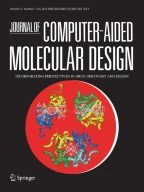Abstract
In proteins, glutamate (Glu) residues are transformed into γ-carboxyglutamate (Gla) residues in a process called carboxylation. The process of protein carboxylation catalyzed by γ-glutamyl carboxylase is deemed to be important due to its involvement in biological processes such as blood clotting cascade and bone growth. There is an increasing interest within the scientific community to identify protein carboxylation sites. However, experimental identification of carboxylation sites via mass spectrometry-based methods is observed to be expensive, time-consuming, and labor-intensive. Thus, we were motivated to design a computational method for identifying protein carboxylation sites. This work aims to investigate the protein carboxylation by considering the composition of amino acids that surround modification sites. With the implication of a modified residue prefers to be accessible on the surface of a protein, the solvent-accessible surface area (ASA) around carboxylation sites is also investigated. Radial basis function network is then employed to build a predictive model using various features for identifying carboxylation sites. Based on a five-fold cross-validation evaluation, a predictive model trained using the combined features of amino acid sequence (AA20D), amino acid composition, and ASA, yields the highest accuracy at 0.874. Furthermore, an independent test done involving data not included in the cross-validation process indicates that in silico identification is a feasible means of preliminary analysis. Additionally, the predictive method presented in this work is implemented as Carboxylator (http://csb.cse.yzu.edu.tw/Carboxylator/), a web-based tool for identifying carboxylated proteins with modification sites in order to help users in investigating γ-glutamyl carboxylation.
Similar content being viewed by others
References
Vermeer C (1990) Biochem J 266:625
Knobloch JE, Suttie JW (1987) J Biol Chem 262:15334
King CR, Deych E, Milligan P, Eby C, Lenzini P, Grice G, Porche-Sorbet RM, Ridker PM, Gage BF (2010) Thromb Haemost 104:750
Wang T, Yang J, Qiao J, Liu J, Guo X, Ye Z (2010) Urol Int 85:94
Furie BC, Ratcliffe JV, Tward J, Jorgensen MJ, Blaszkowsky LS, DiMichele D, Furie B (1997) J Biol Chem 272:28258
Price PA, Urist MR, Otawara Y (1983) Biochem Biophys Res Commun 117:765
Bandyopadhyay PK, Garrett JE, Shetty RP, Keate T, Walker CS, Olivera BM (2002) Proc Natl Acad Sci USA 99:1264
Kulman JD, Harris JE, Xie L, Davie EW (2001) Proc Natl Acad Sci USA 98:1370
Price PA, Poser JW, Raman N (1976) Proc Natl Acad Sci USA 73:3374
Luo G, Ducy P, McKee MD, Pinero GJ, Loyer E, Behringer RR, Karsenty G (1997) Nature 386:78
Ducy P, Desbois C, Boyce B, Pinero G, Story B, Dunstan C, Smith E, Bonadio J, Goldstein S, Gundberg C, Bradley A, Karsenty G (1996) Nature 382:448
Berkner KL, Pudota BN (1998) Proc Natl Acad Sci USA 95:466
Olson RE, Suttie JW (1977) Vitam Horm 35:59
Morris DP, Stevens RD, Wright DJ, Stafford DW (1995) J Biol Chem 270:30491
Pang CN, Hayen A, Wilkins MR (2007) J Proteome Res 6:1833
Lee TY, Huang HD, Hung JH, Huang HY, Yang YS, Wang TH (2006) Nucleic Acids Res 34:D622
Apweiler R, Bairoch A, Wu CH, Barker WC, Boeckmann B, Ferro S, Gasteiger E, Huang H, Lopez R, Magrane M, Martin MJ, Natale DA, O’Donovan C, Redaschi N, Yeh LS (2004) Nucleic Acids Res 32:D115
Peri S, Navarro JD, Kristiansen TZ, Amanchy R, Surendranath V, Muthusamy B, Gandhi TK, Chandrika KN, Deshpande N, Suresh S, Rashmi BP, Shanker K, Padma N, Niranjan V, Harsha HC, Talreja N, Vrushabendra BM, Ramya MA, Yatish AJ, Joy M, Shivashankar HN, Kavitha MP, Menezes M, Choudhury DR, Ghosh N, Saravana R, Chandran S, Mohan S, Jonnalagadda CK, Prasad CK, Kumar-Sinha C, Deshpande KS, Pandey A (2004) Nucleic Acids Res 32:D497
Shien DM, Lee TY, Chang WC, Hsu JB, Horng JT, Hsu PC, Wang TY, Huang HD (2009) J Comput Chem 30:1532
Lee TY, Hsu JB, Lin FM, Chang WC, Hsu PC, Huang HD (2010) J Comput Chem 31:2759
Tatusova TA, Madden TL (1999) FEMS Microbiol Lett 174:247
Ahmad S, Gromiha MM, Sarai A (2003) Bioinformatics 19:1849
Ahmad S, Gromiha MM, Sarai A (2003) Proteins 50:629
Yang ZR, Thomson R (2005) IEEE Trans Neural Netw 16:263
Chen SA, Lee TY, Ou YY (2010) BMC Bioinformatics 11:536
Lee TY, Chen SA, Hung HY, Ou YY (2011) PLoS One 6:e17331
Chou KC, Shen HB (2007) Anal Biochem 370:1
Pan LC, Price PA (1985) Proc Natl Acad Sci USA 82:6109
Larkin MA, Blackshields G, Brown NP, Chenna R, McGettigan PA, McWilliam H, Valentin F, Wallace IM, Wilm A, Lopez R, Thompson JD, Gibson TJ, Higgins DG (2007) Bioinformatics 23:2947
Kauferstein S, Kendel Y, Nicke A, Coronas FI, Possani LD, Favreau P, Krizaj I, Wunder C, Kauert G, Mebs D (2009) Toxicon 54:295
Virdi AS, Willis AC, Hauschka PV, Triffitt JT (1991) Biochem Soc Trans 19:373S
Nielsen-Marsh CM, Richards MP, Hauschka PV, Thomas-Oates JE, Trinkaus E, Pettitt PB, Karavanic I, Poinar H, Collins MJ (2005) Proc Natl Acad Sci USA 102:4409
Crooks GE, Hon G, Chandonia JM, Brenner SE (2004) Genome Res 14:1188
Schneider TD, Stephens RM (1990) Nucleic Acids Res 18:6097
Ashburner M, Ball CA, Blake JA, Botstein D, Butler H, Cherry JM, Davis AP, Dolinski K, Dwight SS, Eppig JT, Harris MA, Hill DP, Issel-Tarver L, Kasarskis A, Lewis S, Matese JC, Richardson JE, Ringwald M, Rubin GM, Sherlock G (2000) Nat Genet 25:25
Acknowledgments
The authors sincerely appreciate the National Science Council of the Republic of China for financially supporting this research under Contract Numbers of NSC 100-2221-E-155-079.
Author information
Authors and Affiliations
Corresponding author
Additional information
Availability: Carboxylator can be accessed via a web interface, and is freely available to all interested users at http://csb.cse.yzu.edu.tw/Carboxylator/. All of the data set that is used in this work is also available.
Electronic supplementary material
Below is the link to the electronic supplementary material.
Rights and permissions
About this article
Cite this article
Lu, CT., Chen, SA., Bretaña, N.A. et al. Carboxylator: incorporating solvent-accessible surface area for identifying protein carboxylation sites. J Comput Aided Mol Des 25, 987–995 (2011). https://doi.org/10.1007/s10822-011-9477-2
Received:
Accepted:
Published:
Issue Date:
DOI: https://doi.org/10.1007/s10822-011-9477-2
